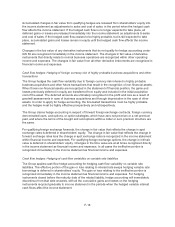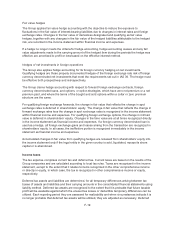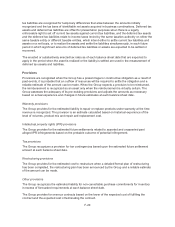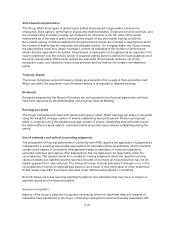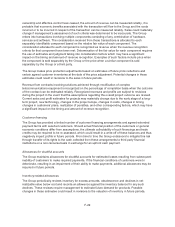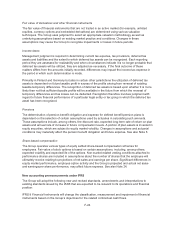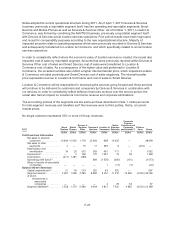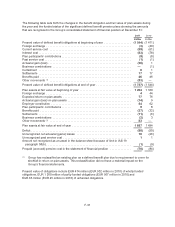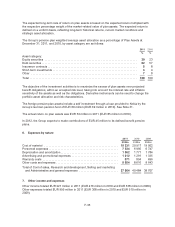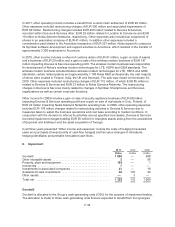Nokia 2011 Annual Report Download - page 236
Download and view the complete annual report
Please find page 236 of the 2011 Nokia annual report below. You can navigate through the pages in the report by either clicking on the pages listed below, or by using the keyword search tool below to find specific information within the annual report.Nokia’s reportable segments represent the strategic business units that offer different products and
services. The chief operating decision maker receives monthly financial information for these business
units. Key financial performance measures of the reportable segments include primarily net sales and
contribution/operating profit. Segment contribution for Smart Devices and Mobile Phones consists of
net sales as well as its own, directly assigned costs and allocated costs but exclude major restructuring
projects/programs and certain other items that are not directly related to the segments. Operating Profit
is presented for Location & Commerce and Nokia Siemens Networks. Nokia evaluates the
performance of its segments and allocates resources to them based on operating profit/contribution.
Smart Devices focuses on smartphones and smart devices and has profit-and-loss responsibility and
end-to-end accountability for the full consumer experience, including product development, product
management and product marketing.
Mobile Phones focuses on mass market feature phones and related services and applications and has
profit-and-loss responsibility and end-to-end accountability for the full consumer experience, including
development, management and marketing of feature phone products, services and applications.
Devices & Services Other includes net sales of Vertu, spare parts and related cost of sales and
operating expenses, as well as intellectual property related royalty income. Operating expenses of
Devices & Services Other also include common research and development. Other income and
expenses include major restructuring projects/programs related to the Devices & Services business as
well as other unallocated items.
Location & Commerce develops a range of location-based products and services for consumers, as well
as platform services and local commerce services for the Group’s feature phones and smartphones as
well as for other device manufacturers, application developers, Internet service providers, merchants, and
advertisers. Location & Commerce also continues to serve NAVTEQ’s existing customers both in terms
of provision of content and as a business-to-business provider of map data. Location & Commerce has
profit and loss responsibility and end-to-end accountability for the full consumer experience.
Nokia Siemens Networks provides a portfolio of mobile, fixed and converged network technology, as
well as professional services including managed services, consultancy and systems integration,
deployment and maintenance to operators and service providers.
Corporate Common Functions consists of company-wide functions.
In February 2011, Nokia announced a partnership with Microsoft to bring together the respective
complementary assets and expertise of both parties to build a new global mobile ecosystem for
smartphones. The partnership, under which Nokia is adopting and licensing Windows Phone from
Microsoft as its primary smartphone platform, was formalized in April 2011.
The Group is paying Microsoft a software royalty fee to license the Windows Phone smartphone
platform, which the Group records as royalty expense in its Smart Devices cost of goods sold. Nokia
has a competitive software royalty structure, which includes annual minimum software royalty
commitments and reflects the large volumes that the Group expects to ship, as well as a variety of
other considerations related to engineering work to which both companies are committed. The Group
expects that the adoption of Windows Phone will enable it to reduce significantly its operating
expenses.
In recognition of the contributions that the Group is providing, the Group will receive quarterly platform
support payments from Microsoft. The received platform support payments are recognized over time
as a benefit to our Smart Devices costs of goods sold. The total amount of the platform payments is
expected to slightly exceed the total amount of the minimum software royalty commitments.
The Microsoft partnership also recognizes the value of intellectual property and puts in place
mechanisms for exchanging intellectual property rights.
F-26




